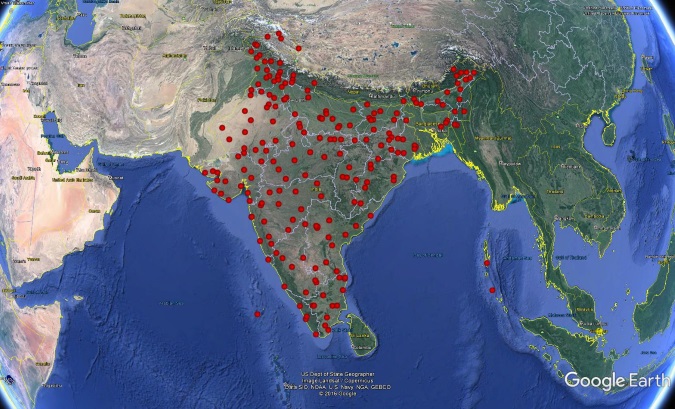Overview
In an article we published earlier this year, we discussed the boom in solar photovoltaic (PV) deployment in India, specifically regarding large commercial schemes. This article provides an update on the Indian solar PV industry as a whole with information regarding our experience within the Indian market.
Background and market update
India is becoming a major player within international solar PV development. Cochin Airport in Kerala was the first airport in the world to become self-sufficient using its own solar scheme adjacent to the airport to meet 100% of its energy needs. Whilst in 2015, the collaboration between Vikram Solar and Arka Renewable Energy College led to installation of India’s first floating solar plant as part of a trial project[1].
In total, installed capacity in India grew by approximately 5.5GW from March 2016 to March 2017. The total cumulative solar PV capacity is currently at approximately 12.3GW as of March 2017, compared to a recorded capacity of approximately 6.8GW at the end of March 2016.
The government has set further ambitious targets for 2017-2018, with the aim to have 20GW installed by March 2018. This target will reach the Jawaharlal Nehru National Solar Mission (JNNSM) objective two years in advance of its original deadline (2020). The next target, set by Prime Minister Narendra Modi, is very ambitious. The aim is to have a total cumulative installed solar PV capacity of 100GW by 2022. This target will require rapid deployment of solar PV across the country in the coming years[2].
Pager Power’s experience in India
Having recently completed Glint and Glare Assessments for solar PV developments located on or near to airports in India, we wanted to take a look at the wider picture, looking at airports throughout India and locations where a glint and glare assessment may be required.
There is currently no specific glint and glare guidance in India for assessing glint and glare. The most appropriate guidance for assessing glint and glare for aviation is the Federal Aviation Administration (FAA) guidance in the USA. Pager Power has also produced more specific guidance based on the FAA’s guidance which details additional assessment requirements based on Pager Power’s assessment experience.
According to the Directorate General of Civil Aviation (DCGA) there are 68 licensed aerodromes and 16 additional aerodromes licensed under ‘private use’ in India[3]. These numbers do not include unlicensed aerodromes where glint and glare concerns can also arise.
The DCGA is the regulatory body in the field of Civil Aviation primarily dealing with safety issues. It is responsible for regulation of air transport services to/from/within India and for enforcement of civil air regulations, air safety and airworthiness standards[4].
Figure 1 below shows the general location of aerodromes in Indian (red circles).
Figure 1: Location of aerodromes in India
The figure shows a large number of aerodromes located all over the country.
Conclusions
India is targeting vast deployment of solar PV over the coming years, with the target of increasing its capacity eight-fold by 2022. One of the main concerns should be the effects of glint and glare, especially when the solar panels are to be located on or near to aerodromes. Figure 1 shows there are a large number of aerodromes throughout the country and therefore it is inevitable that a number of solar PV developments will be located in their vicinity. In these scenarios, it is important to assess and consider the effects of glint and glare to ensure that Indian airports maintain high safety standards.
References
[1] Vikram Solar Completes India’s first floating PV Plant, PV Magazine (Last Accessed 02/02/2015).[2] India’s solar energy capacity expanded by record 5,525 MW, Kaavya Chandrasekaran of The Economic Times, 06.04.2017 (Last Accessed 04/05/2017).
[3] http://www.dgca.gov.in/aerodrome/aero-list-ind.htm (Last Accessed 04/05/2017).
[4] http://www.dgca.gov.in/dgca/dgca-ind.htm (Last Accessed 04/05/2017).

